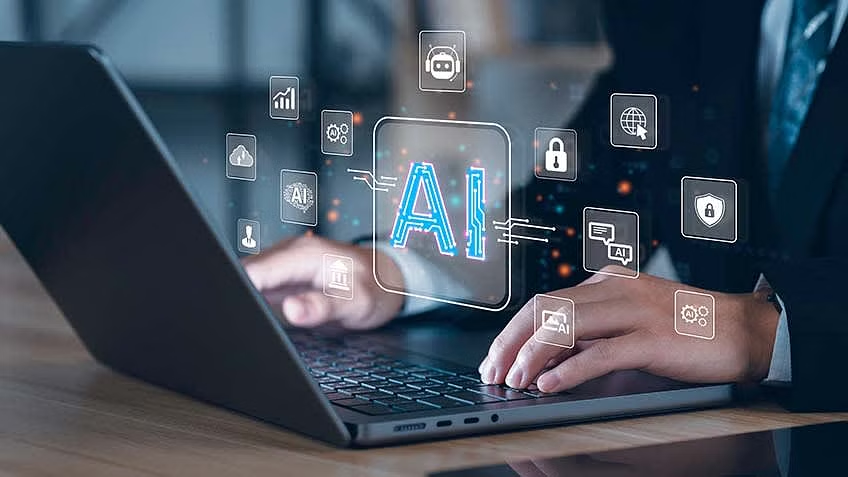Learn about What are GenAI tools. GenAI technologies redefine and transform content creation with their AI-based models for text, images, code, and beyond. GenAI technologies enhance creativity, automation, and productivity in marketing, design, and software development industries.
Introduction
GenAI tools are kinds of software programmed to produce text, images, codes, audio, and the like that mimic human performance. These tools make newly generated content in response to inputs using tools such as deep learning models, natural language processing (NLP), and neural networks.
GenAI tools are transforming several industries through their automation, creativity, and productivity advances, making them an important asset for content creators, developers, designers, and companies.
What are GenAI tools?
Generative AI (Gen AI) tools are a category of software powered by artificial intelligence for generating text, images, code, audio, and the rest. They employ deep learning models that use GPT and DALL-E, powered by prompts, to provide human-like content.
The use of these tools includes content production, design automation, and problem-solving, even as they augment different industries, including marketing, software engineering, and media production, for productivity and creativity.
Examples of GenAI Tools
1. ChatGPT
ChatGPT is a chatbot that uses AI to produce text responses similar to those of humans based on what users input. It assists users in content development, answering queries, generating ideas, and providing coding support, making it of value to authors, programmers, companies, and teachers seeking auto-generated but human-like language engagement.
2. DALL-E
DALL-E is an AI tool that creates images based on its text description. Through deep learning models, it generates realistic or artistic images based on the text prompts provided, becoming invaluable for the searcher and the creators who are creating truly immersive and custom airways.
3. GitHub Copilot
GitHub Copilot is a coding aid powered by artificial intelligence that accelerates developers” writing code. It provides whole line or function completions in real-time, facilitating software development. Through context comprehension, it saves time, makes fewer mistakes, and assists programmers in multiple code languages and frameworks.
4. Claude
Claude is a state-of-the-art AI chatbot developed by Anthropic with an emphasis on safety, dependability, and assistive interactions.
It helps in writing, responding to inquiries, and providing insights while abiding by ethical AI principles, rendering it a competitive substitute for other conversational AI tools such as ChatGPT.
5. AlphaCode
AlphaCode is an AI tool designed specifically for competitive programming. It generates code for a complex problem and then optimizes it, facilitating the access of developers or researchers to the use of the generated code in solving difficult coding challenges. It has effective reasoning and problem-solving capabilities in algorithmic programming competitions.
6. Anyword
Anyword is an AI-powered copywriting tool that generates marketing content, ad copies, and social media posts. This AI application predicts engagement behavior based on data insights and thereby suits all businesses looking to improve their messaging and AI-generated high-converting content for audience engagement.
7. Cohere
Such types of companies can be stated as an NLP platform and also provide AI models capable of text generation, analysis, and searching. This makes it extremely beneficial for businesses to improve their chatbots, summarization, and automated responses all in one place.
Cohere will thus help industries such as customer servicing, e-commerce, and content marketing with scalable language AI solutions.
How GenAI Tools Work
1. Learn Patterns from Large Amounts of Data
These tools of GenAI forge advanced models of machine learning to continue predicting what could be the next word in the text, pixel in an image, or note in music.
Based on probabilistic prediction, they make it so that the outputs are logically consistent and contextually appropriate, thus providing coherence, structure, and a very high naturalness to the extent that it is done by an AI.

2. Create Original Content That Feels Human-Like
GenAI tools deploy an array of deep learning algorithms and modeled patterns to fabricate creative and human-like content.
They make it possible, be it in writing, designing, composing, or coding, for extensive automation and innovativeness to allow individuals and businesses to produce high-quality original content most efficiently with little manual input.
Applications of Generative AI Tools
- Content Generation: Generative AI writes in a way that ensures more high-quality articles, blogs, as well as social media posts. It brings creativity in writing interesting and SEO-friendly articles that enable a strong foundation for automation in writing tasks for certain businesses, marketing strategies, and persistence across platforms with a scarce human touch.
- Image & Video Creation: The realistic images, animations, and videos generated by AI tools improve the quality of creative projects. They serve in advertising, gaming, and film-making by configuring automated processes of producing visual content, reducing costs, and highly rapid prototyping for quality multimedia assets.
- Code Development: Generative artificial intelligence makes coding easier because it suggests, debugs, and completes pieces of incomplete coding. It enhances the productivity of a developer who wants to learn yet another language or perhaps automate the repetitive tasks during software development effectively and make it available to new programmers as well as experts.
- Chatbots & Virtual Assistants: AI chatbots develop customer service channels. Virtual assistants do the scheduling, recommendations, and eloquent talking. Such systems or software are vital across sectors because they make different functions, like handling inquiries and queries or processes such as e-commerce and healthcare, seamless and highly reactive.
Challenges of GenAI
Challenges Moving Generative AI into Production
Implementing generative AI into production involves dealing with challenges such as data privacy, computation expenses, and integration complications.
Companies need to guarantee smooth workflows, model stability, and ongoing monitoring to avoid failure that can affect performance, compliance, and total user experience.
Cybersecurity
Generative AI systems are susceptible to cyber-attacks in the form of data leaks, adversarial, and prompt injection. Threat agents can misuse generated content by hackers, necessitating strong security procedures, encryption methods, and daily system auditing as a measure for ensuring integrity as well as privacy.
Enhancing Security
Enhancing security for generative AI entails using sophisticated threat detection, access controls, and secure training environments. Upgrades, ethical hacking, and AI-based monitoring can reduce threats, making models run within secure and controlled boundaries.
Inaccurate or Harmful Outputs
These models may output misleading, biased, or even, on some occasions, offensive information. Validation of information through the refinement of the models involves human intervention and improved filtering mechanisms to contain errors and misinformation from spreadin.g
Scalability Issues
Scaling generative AI is very computationally intensive and requires a large cloud infrastructure and efficient handling of data. Organizations have to optimize performance and cost while meeting latency issues that may impair real-time applications of AI.
Ethical Concerns
Generative AI raises ethical concerns, including bias, misinformation, and content tampering. All these must be addressed through clear AI regulation, ethically sound training data selection, and fairness-driven algorithm application to encourage responsible AI use.
Regulatory Compliance
Governments are imposing stricter regulations on AI, and businesses must adhere to data protection laws, content moderation guidelines, and transparency requirements. Adherence to new AI regulations is necessary to avoid legal risks, financial penalties, and reputational damage.
Conclusion
GenAI technologies are revolutionizing how we design and engage with digital content. Composing, designing, coding, or advertising, GenAI technologies make us more efficient, creative, and mechanized. As AI develops further, GenAI technologies will be even more central to industries, revolutionizing human-machine interaction in the digital world.






